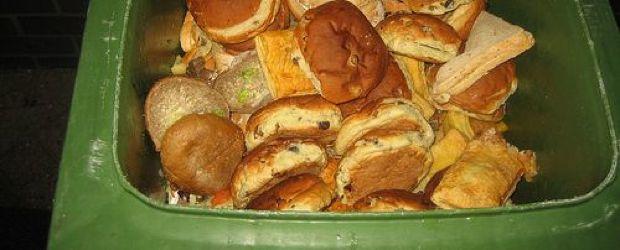We gooien te veel voedsel weg in De Uithof

De vuilnisbakken van De Uithof liggen vol met voedsel dat nog prima eetbaar is, schrijft Robert Orzanna van het studenteninitiatief 100% Food Use.
Globally we waste or lose about 32 percent of all food which is produced for human consumption. Wasting food means wasting water, energy, land and money that we not have to our availability. Thinking of food waste as a distanced issue of food producers alone is an illusion. Food waste occurs throughout the entire food chain: at supermarkets, canteens, in households, institutions and well at Utrecht University.
On Uithof campus we therefore founded the student initiative 100% Food Use to analyse the issue of food waste at Utrecht University. Our results are shocking, but so are the potentials for avoidance of food waste and increased food use.
Occurrences of food waste at UU
What are the sources of food waste? Throughout the last months of work and research, we investigated the following sources of food waste on Uithof campus.
1. Students do not finish their meals.
Most of the food consumed by students on campus is either bought at the Spar supermarket, the Kebab snack, the pizzeria, at HEMA or in the canteen of the Educatorium building. An interesting insight was that many students do not eat the entire pizza. Particularly the crust is often left over if not entire slices. Does this imply that the sizes of the pizzas are too large? The pizzeria could think of introducing a smaller size for a reduced size.
In the canteen, the second big source of food waste from students, students do not properly separate their waste streams which makes natural composting impossible. What hinders students to dispose their leftovers properly into the waste containers that are already provided? How can the caterer label the waste bins differently in order to incentivize more students for proper separation?
2. The caterer of Uithof campus wastes leftovers from events.
Uithof campus is regularly venue for events at which a lot of food, particularly sandwiches but also pasties and nut snacks are wasted. For a caterer, estimating the demand and hunger of a group of people is agreeably difficult, especially for large events with several hundred people. Whilst better ways of demand estimation have to be investigated, easy solutions exist that could be explored.
By law catered food has to be consumed within two hours from the time when it has been offered. This leaves some room for sharing. Leftovers could be sold to students for a reduced price once the event has finished.
3. The caterer of Uithof campus disposes packaged, nonexpired food on a Friday.
Food, mostly sandwiches and salads, that is left on a friday and has an expiration date for saturday is wasted as the canteens are closed over the weekend. A possible solution could be that an initiative such as 100% Food Use buys the leftovers for a reduced price from the caterer and does something with it on the saturday before the expiration.
Join us, talk to us!
What do these examples tell us? They shed light that many sources of food waste have preventable causes and that easy solutions exist to better reuse leftovers that do not rely on sophisticated technology but collaboration, willingness and socialbehavioural change.
If you are interested in thinking with us about the future of food use at Utrecht University, please feel free to join us. Write an email to 100percentfooduse@orzanna.de. If food waste and food in general is one of your passions, then please share your thoughts and give a talk at UU Talks.